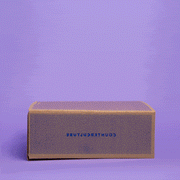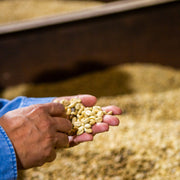We offer a diverse catalog of quality coffees throughout the year. While it’s nice to have options, it can also make picking your favorite a challenge. With that in mind, let’s dive into our menu to help you find your ideal coffee!
Our coffees fall into three main categories: year-round, single-origin, and seasonal releases. Let's dive into what a single-origin coffee is and why you might want to try one.
What Does Single-Origin Mean?
On the surface, “single-origin” sounds like a straightforward description of something that comes from one place. Yet, like so many things in coffee, what this means exactly depends a LOT on the context. Defining a place can be very complicated. Look on the shelves in your local grocery store, and you’ll see coffees with labels as generic as “Ethiopian Coffee.” Many people would consider this to be single-origin because all the coffee comes from that one single country. At Counter Culture, we define our single-origin coffee much more specifically– they can all be traced to a region, a cooperative, and even an individual farm and producer.

We believe in being as clear and detailed as possible with our coffees’ origins. Transparency is key. To highlight this, we name our single-origin coffees as specifically as possible, usually with guidance from the producers. If a coffee comes from one farm or producer, we often name it after that farm or producer. A good example of this is Finca El Puente from Marcala, Honduras, a farm owned and named by Moises and Marysabel Caballero.

Another possibility is that a coffee comes from a producing group within a limited geographical area. In this case, that group usually has chosen a name to identify themselves and their coffee. An example here is La Golondrina, from Timbio, Colombia. Members of the Organica Cooperative selected this name to represent themselves and the idea of connecting across borders.
What Makes Single-Origin Coffee Special?
Now that we understand what a single-origin coffee is, let’s talk about what makes them special. Mostly, it comes down to taste. Not to say that a single-origin coffee necessarily tastes better than blends or year-rounds, but that each Single Origin tastes different, one to the next. Many factors influence flavor, including coffee variety, inputs, climate, and processing. Each one of these factors is unique to a place. From country to country and region to region, coffee flavor varies.
A final and very important characteristic of single-origin coffee is seasonality. Because coffee tastes best when it is recently harvested, we only keep them on our menu for a limited time. Counter Culture purchases coffee such that we can sell it at its peak, flavor-wise. We want to ensure that you are getting the best coffee experience possible. Depending on the size of a lot of coffee and its ability to stay fresh, some Single-Origin coffees will be on the menu for many months, while others will only be there for a few days. The great thing about the relationship model we use when buying coffee, though, is that even after a coffee has left our menu, it will likely be back again at the same time next year. Identifying the coffee by origin allows us to taste that difference while knowing where it came from so we can look forward to it hitting the menu year after year.
How Can You Find A Single-Origin Coffee That You Love?
Check The Flavor Notes

First, check out the flavor notes provided by our coffee department. They work hard to taste coffees and identify their recognizable flavors. If the flavor notes on a certain coffee sound appealing, give it a try!
Pay Attention To The Origin Of The Coffee

While all coffees have unique qualities, ones that come from the same country and region often have similar enough characteristics. Chances are, if you enjoy one, you’ll likely appreciate another.
Don’t Hesitate To Ask
If you feel stuck or confused, please reach out to our customer support team. They know all of the coffees on our menu and can make great recommendations based on your preferences.






